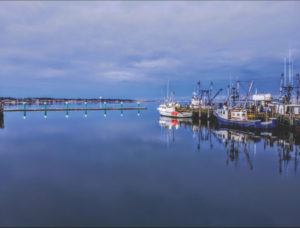
Memorial Day weekend has come and gone, and all the questions about how busy the waterfront would be have now been answered. It’s not looking good.
On top of the Covid-19-related restrictions, we had air temperatures in the high 40s to low 50s, howling cold, damp east and northeast winds blasting the shoreline, and a little bit of rain on and off.
A fatal kayak accident marred an already depressing weekend on the waterfront. [See story on page A4.]
This is probably a good time to remind everyone that our water temperatures are currently between 45 and 50 degrees, still too cold to be immersed in for any length of time before hypothermia sets in. If you find yourself in the water unexpectedly, within 5 to 10 minutes you will begin to lose dexterity, and in 30 to 60 minutes you will lose consciousness.
Many people make the mistake of thinking that air and water temperatures go up and down concurrently. In New England at this time of year, we can be fooled when the air temperature is 80 degrees, because the water can be dangerously colder.
On Saturday morning, I decided to take the Cee Jay out on an exploratory trip just to see what’s around. As I cruised by Herring Cove, I did not see one person on the beach, but I did see a rather large coyote sitting in front of the bathhouse. It was a compelling sight on Memorial Day weekend, an emblem of how differently from other years this summer has begun.
I later heard that a coyote had bitten a person sitting on that beach. I believe the lack of human activity in places like our local beaches are allowing wild animals to become more comfortable exploring these areas in search of food. Is this a new pattern of collision between humans and wild creatures?
I am happy to report that the wave attenuator that was installed on the east side of MacMillan Wharf to protect the inner harbor from damaging northeast and east winds was tested last weekend and looks to be a great success. We had some pretty stiff winds from those directions, and the boats, including mine, which I live on, were much less bouncy on the water. I, for one, am extremely grateful for this addition to the harbor.
Ours is one of the most unprotected harbors I have ever seen, with unblocked deep water very close by. The result is that damaging waves enter our inner harbor when there are high winds. The combination of the wave attenuator that the Provincetown Marina installed on the west side and the new attenuator the town installed on the east side has made the inner harbor significantly safer for boats and finger piers.
Fishing is still pretty slow for striped bass and bluefish, as what looked like an early start due to a warmer winter has backfired with a colder than usual spring. Consequently, the migration has slowed and the main body of fish is still south of us in Block Island Sound and the waters off Long Island. Flounder fishing has been good off of Wellfleet and Dennis’s Sesuit Harbor in deeper water then we typically fish for them, and tautog fishing remains good around rock piles and breakwaters. Mackerel are literally everywhere in big numbers but particularly up in the Horseshoe Cove on the south side of Provincetown Harbor.



